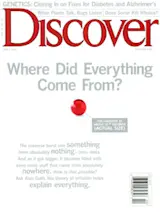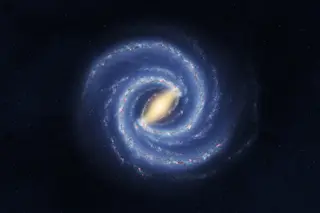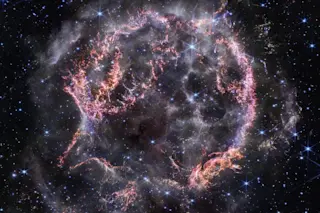Where did everything come from? Don't say, "the Big Bang." To say that everything came from the Big Bang is like saying babies come from maternity wards—true in a narrow sense, but it hardly goes back far enough. Where did the stuff that went "bang" come from? What was it? Why did it bang?
Inflationary universes need not be natural, argues Guth (plotting the curving boundaries of hypothetical artificial universes against a space-time axis). In his view, an advanced race could harness the engines of inflation and create a whole cosmos from scratch. Indeed, our universe could be such a creation.
Before Alan Guth came along, cosmologists seldom dared to guess.
The Big Bang theory, based on speculations dating back to 1922 and confirmed by astronomers in the 1960s, posited that the universe began as a minuscule fireball of extreme density and temperature and that it has been expanding and ...














